
How to Go on a Budget Safari in Masai Mara Kenya
Going on a safari in Africa is one of the ultimate travel goals for many people, especially animal/nature lovers. The only problem is, it can also be the biggest expense in your entire African trip. But that doesn’t always have to be the case.
It is possible to pay only USD 300 for a 3D2N all-inclusive safari package! This article will tell you how.
Masai Mara National Reserve, Kenya
In October 2019, I went on a 3-day-2-night safari in Masai Mara.
Why did I choose Masai Mara?
Because of The Lion King. Really.
Masai Mara is not the cheapest place for a safari, but after watching the movie, I developed an affinity for Simba, almost to the point of obsession (bought Simba merchandise and all). So, I decided that I had to visit either Serengeti or Masai Mara, the two places that inspired the setting of the movie.
Masai Mara and Serengeti are basically the same park that is spread over the Kenyan and Tanzanian border. The Kenyan part is called Masai Mara and the Tanzanian part Serengeti. In general, Tanzanian safaris are more expensive than Kenyan ones, so Masai Mara it was for me.
It was a silly reason to visit a place, but hey, Iceland received an influx of tourists (from 566,000 in 2011 to over 1 million in 2015) because of The Game of Thrones, so, whatever floats your boat, right?
How to Get to Masai Mara
The Masai Mara National Reserve is located about 270 kilometers (168 miles) away from the Kenyan capital, Nairobi. Traveling by land between the two can take around 4 – 5 hours. You can DIY your trip by renting a car and driving to the game reserve.
To avoid this long travel time, many safari-goers fly into Nairobi’s international airport (Jomo Kenyatta International), and catch a short-haul flight from nearby Wilson Airport to the Masai Mara’s various airstrips.
Sometimes, the airplane may drop off other passengers first before continuing to your airstrip — sort of like a bus system for the savannah. It is, of course, not the cheapest option. Most budget-conscious travelers book a safari package that includes transport from Nairobi.
Landscape
The classic Masai Mara landscape is golden savannah: 370,000 acres of flat grasslands with an abundance of grazing areas, making it an ideal terrain to spot the grazers (and their predators).

The elephants — over the centuries — have pretty much flattened the land, clearing it of forests. But it still has clumps of trees and seasonal rivers. ‘Mara’ actually means ‘spotted’ in the Maa language — the language spoken by the Maasai people, who are the native residents in the area. It refers to how the park is dotted with acacia trees, indentations, and craters.
Here, you can expect to see elephants, buffaloes, zebras, giraffes, hyenas, and the big cats — lions, leopards, and cheetahs. But what it is most famous for is the annual Wildebeest Migration, possibly the greatest show on earth, which takes place between July to November.
Best Time to Go on a Safari in Kenya
The only time when you should avoid going is during Kenya’s long rains around April to June. During this time, some safari lodges and camps might be closed. Apart from that, there’s no exact ‘best time’ to go. Thanks to its abundant wildlife, there’s always something to see in Masai Mara’s plains.
Therefore, deciding when to go to Masai Mara depends largely on your own personal schedule, budget, and what you want to see and experience.
Peak Season
- When? July to October
- Seasons: Autumn and winter
- Weather: Cool with no rain
- Wildebeest migration? Yes
- Landscape: Dry and dusty
- Highlights: Wildebeest migration
Low Season
- When? December to April
- Seasons: Spring and summer
- Weather: Hot with afternoon thunder showers
- Wildebeest migration? No
- Landscape: Lush and green
- Highlights: Babies and migrant birds
Alternatively, if you travel in the ‘shoulder seasons’ (November, May & June), you will get to experience a little bit of both.
What to Bring on a Safari in Kenya
Bring what you would normally bring on your regular travels, like your passport, wallet, phone, earphones, travel adapter, toiletries, etc, but most importantly:
- A hat or cap – You will be outdoors for hours. Although the vehicle you’re in most probably has a roof, the sun can still shine directly at you through the windows. Some vehicles also have raised roofs, allowing the sun to roast you to a crisp perfection.
- Sunscreen – Ditto above.
- Sunglasses – Ditto above. And also to look good for the pictures.
- A good camera – A phone camera just won’t do the place any justice, unless it has optical zoom. There are some animals that you just can’t get very close to because they’re either dangerous or shy, and because the safari vehicles are not allowed to stray from the marked trail.
- Binoculars – If you can’t get a good camera, at least get a good pair of binoculars (with at least 8x magnification).

- Prescription meds – Make sure you don’t run out when you’re on the safari!
- Sanitary products – Ditto above.
- Preventive meds – These are medicines that you don’t normally consume, but need to bring anyway, in case of emergencies, such as pills for diarrhea, motion sickness, headaches, heartburn, indigestion, allergies, and malaria. And while you’re at it, bring insect repellent and hand sanitizer too.
- Toilet paper – You’re going to be in the savannah for a whole day. At some point during your safari, you’re going to have to relieve yourself in the bush, whether you like it or not. Most companies provide toilet paper, but if you tend to use a lot, be sure to bring your own.
- Torchlight – Depending on your type of accommodation, this might be necessary.
- A small backpack – To carry the essentials with you on the safari, such as your water bottle and all of the above.
What to Wear on an African Safari
These days, many safari camps and lodges provide same-day laundry services. So, you don’t have to bring a change of clothes for every day that you are on the safari. Check with your travel agent if you will have access to a laundry service at your camp.
Also, ask them what the weather will be like during your visit. This will help you tremendously in choosing what to pack. Some places can be freezing in winter, so you might need gloves, scarves, thick jackets, and wool caps. Some places can be warm during the day but dramatically change in temperature after sundown.
- Keep it casual but comfortable – Be it your clothes, undergarments, or footwear, going on a safari is one of the times when you have to put comfort over style. Keep in mind that you’ll be wearing them for the whole day (and maybe night too). Quick-dry fabrics are a good option.
- Layer it up – When you’re visiting a place with fluctuating temperatures, instead of bringing one very bulky jacket, bring a few thinner layers — so that you can layer them up or peel them off as you see fit. This saves a lot of space.
- Wear neutral colors – There’s a reason why most safari-goers wear khaki outfits — and it’s not because it’s the ‘in’ thing to wear. Khaki, taupe, beige, and grey are the best colors to wear on a safari because black and dark blue are said to attract the African tse tse flies. Red will attract predators who identify red with wounded animals. And white is not an ideal color to wear due to the amount of dust in the bush.
- These are the must-have items in your safari checklist:
-
- T-shirts, loose shirts, or blouses. Long sleeves and collars can help protect you from the sun and mosquitoes.
- Safari trousers or shorts. Or those that zip off at the knees, so that you can have both trousers and shorts.
- Swimsuit if your camp has a swimming pool (check with your agent).
- Something elegant/smart casual if your safari includes dinners at nice hotels.
- Hat
- Comfortable walking shoes or sports sandals in the warmer months.
- Socks
- Bandanna/cotton scarf/sarong
- Fleece or warm jacket (depending on the weather)
- Undergarments
How Much is an African Safari?
Now we get to the most important question: how much is it?
The price of a safari varies greatly, based on:
- Location – Safaris in East African countries are generally known to be more expensive than those in the south. And even within the same region, prices can differ from one country to the next. For example, Tanzania is more expensive than Kenya and Uganda. Likewise, within the same country, the prices can still be different from one park to another.
- The time of the year – Traveling outside of the peak season can be a great way to save money. There are fewer people, and safari packages tend to be a lot cheaper. Besides, going on a safari in the rain is not entirely terrible. You might get some interesting shots.
- Duration – You can go on a 10-day safari if you want, or you can make it a day trip. The longer it is, the cheaper you have to pay per day, but the overall cost is still going to be more.
- Private or shared – Obviously, a shared safari is going to be a lot cheaper than a private one. And the more people in the group, the less that you have to pay per person.
- Type of accommodation – There are various types of accommodation available, from shared tents to private honeymoon suites.
- Activities – Some safaris also include hot-air balloons, cultural visits, boat rides, candle-lit dinners, spa treatments, etc.
A 5-star luxury safari in the high season can easily cost around $1,500 per person per night.
But I’m always one to go for the cheapest deal possible. And after many hours (probably days) of scouring the net, I finally found a safari package that suited my budget.
Malvic Tours & Safaris
I stumbled upon Malvic Tours & Safaris on Couchsurfing while I was looking for someone to host me in Nairobi. The company was founded and managed by a brother-and-sister duo: Cecelia and Victor, both of whom were Couchsurfing hosts.
Although they did advertise their company on their Couchsurfing profiles, not once did I feel obliged to book tours with them. But I asked anyway about what offers they had. And when I heard their price, I made a booking right away.
It was only USD 300 for a 3-day-2-night safari, all-inclusive. Not only did I score a great bargain, I also got a place to stay for two nights (before and after the safari) for free!
Was it a good experience though? Read on to find out.
What to Expect on a Safari in Masai Mara, Kenya
Day 1
At 6.00 a.m., Victor and I left the house to take a public bus to the pickup point in the city. Taking public buses in Nairobi is in itself quite an experience. This is what a typical bus in Nairobi is like:
Video Player
Yup, that’s a bus, not a nightclub.
We first went to Victor’s office so that I could make the full payment. Once that was done, he took me to a nearby cafe for breakfast (not included in the package).
After that, I met my driver cum guide, and the other people in my group. I was with 5 other people: 2 couples and one solo traveler. They were all about my age (early 30s), except the Japanese solo traveler, who was a little older.
When everyone was ready, we made our move at around 8.00 a.m. On the way, we stopped at a viewpoint to see the sprawling landscape of the Great Rift Valley. It encompasses 9,600 kilometers from Mozambique all the way to the Red Sea.


Lunch was a buffet of African dishes with rice. Although I’m a meat-eater, I couldn’t help noticing that there were plenty of vegan/vegetarian options, and that best of all, they tasted great. On top of that, the premise was exceptionally clean. The food was still hot and there was a chef standing by to ensure that it was replenished frequently.


After lunch, it was just a short drive before we reached our accommodation. We checked in, and collected our keys, towels, drinking water, and toilet paper. Note that the drinking water and toilet paper were provided by the agent, not the lodge.

I met my roommate, a Kenyan girl named Mata. Our room had tarpaulin walls with zippers, much like a tent.
However, the inside was very spacious and well-equipped that you’d feel like you were in a regular dormitory room. It came with electricity, charging points, and an ensuite bathroom! With hot water!
There were 4 beds but because we were the only two female solo travelers, we had the room to ourselves. Well, technically she wasn’t traveling solo. Her friend was on a romantic holiday and invited her along, so while the couple had a private room, she had to bunk with me.
We were given around two hours to rest and freshen up, after which we would be making our first visit to the park.
The real safari would start the next day, but this was to be a sneak peek at what we would be seeing tomorrow.

















At about 3 p.m., we set out to the Masai Mara National Reserve. The roof of the van could be elevated so that we were able to see outside and take pictures without any glass barrier. The height was just perfect — we could all stand comfortably, but if you’re above 6 ft, I reckon it would be a little cramped.
Within just a few hundred meters from the main gate, we got our first glimpse of the wild animals — first the zebras, then the gazelles, and then the giraffes. It was such a magical feeling to see them for the first time in real life — and not in the zoo. I couldn’t believe it was really happening.

We had to leave by 5 p.m. otherwise the driver would be penalized. But in just a couple of hours, we managed to see giraffes, zebras, gazelles, elephants, and wildebeests — pretty much most of the grazers in the savannah. That’s not too shabby!
Day 2
We were told to wake up early on the second day to catch the sunrise. So, we woke up, had breakfast, and were ready before 7. The first animal we saw was this giraffe having his/her first meal of the day:

And then we started to see the big cats. It was crazy how close they were to us. They didn’t seem to be scared at all by the vehicles.
We saw quite a number of cheetahs frolicking under the morning sun:

Pumba minding his own business:

And a very lazy Simba:

But the most memorable sighting was probably of two lionesses hunting, killing, and subsequently eating a baby pumba (warthog). I’m not saying it was pretty, but man, was it unforgettable! The sound of bones crunching, and the sight of intestines trailing out on the grass. Definitely not for the squeamish.
The safari guides worked as a team and were constantly communicating with each other via walkie-talkies. Each time one of them saw something interesting, he would alert the rest, and we would all rush to his location.
For lunch, we had a picnic in the park. Like, a proper picnic — with a picnic mat, fruits, and sandwiches. The only thing missing was the wicker basket. Instead, our packed lunch came in brown paper bags.

We ended the second day with a visit to the famous river where the wildebeest migration takes place every year. At the time of our visit, there was not much activity there though, apart from hippos wallowing in the mud.

Day 3
On the third day, we were allowed to sleep in. Those who were interested in visiting the Masai village (which was right next to our camp) could do so at an extra charge of USD10. Otherwise, we were free to have a late breakfast before making our way back to Nairobi.
I went with a couple other people to the traditional Masai village. First, we were welcomed with a traditional dance. The Masai people, especially the men, are trained to jump high. The higher a man jumps, the less dowry he has to pay when asking for a girl’s hand in marriage.
After that, we were taken through their settlement, where we learned how they lived their nomadic lifestyle in houses made of mud and dung.
It’s interesting to note that all the houses in a Masai village are built by the women. The men’s job is to go out hunting. Young men are routinely sent out alone into the wild to kill a lion and bring home the lion’s teeth as a coming-of-age ritual. The teeth are then made into pendants to be worn or sold to visitors. Expect them to try to sell you some.

Done with the visit, we began our journey back to Nairobi. The driver dropped each one of us at our respective hotels. By 5 p.m., we had all reached our destinations.
Final Thoughts
 Would I recommend Malvic Tours & Safaris?
Would I recommend Malvic Tours & Safaris?
Yes, definitely. In my travels (and in my life, for that matter), price is always the number-one priority. Everything else comes second. This attitude has allowed me to travel much further than I ever would have done had I been less prudent about money.
Sometimes, it can also mean that I get subpar experience. But fortunately, Malvic Tours & Safaris didn’t disappoint. Despite their relatively low price, they didn’t compromise on quality. I got everything as advertised — no cutting corners.
My roommate Mata, who booked with a different company, actually had to pay more. But while I got three large bottles of water, she got only two small ones, and only after requesting.
So, if you’re on Couchsurfing, do get in touch with either Victor or Cecelia and see if they could accommodate you. Otherwise, you can contact them via their website and Facebook page, as written above.
Is a 3d2n safari enough?

Yes, to me, it was more than enough. It could even have been shorter — if you skipped the Masai village and the first day of the safari.
Seeing the animals up-close for the first time is truly exhilarating — no doubt about that. You’re in awe. You can’t believe you’re there. You want to take as many pictures as you can.
But by the second day, the novelty would have pretty much worn off. Oh just another zebra. Just another gazelle. You only get excited when you get a glimpse of the rarer animals — like the big cats. But even those will bore you too after a while.
Within one day, I got to see 4 of the Big 5 (all except rhinos, but rhinos are extremely rare anyway). I can’t imagine going on longer safaris. I think it’s more suitable for serious photographers who want to take pictures in as many different lights and in as many different locations as possible. Otherwise, if your goal is simply to see the animals, I think 3d2n should suffice.
Additional Tips for African Safari
Now that you know how to book a safari and what to pack for it, here are a few other pointers you might find useful:
- Before you go, check with your travel clinic or tour agent about necessary vaccinations/preventive meds. Some places may require malaria pills, some don’t, and this may also vary based on the time of the year. I didn’t have to take malaria pills for Masai Mara in October because it was the dry season.
- Not every moment of your safari will be enjoyable. You might be driving for hours, sweating and swearing on bumpy roads before you even get a glimpse of the coveted Big 5. So, don’t set your expectations too high — it’s not going to be all rosy from start to finish.
- Be open-minded and flexible. Nature is unpredictable. On some days, it might be more difficult to spot the animals than on other days. Sometimes, it may mean driving back and forth in the same places or going around in circles while waiting for them to appear.
- Be considerate. If you’re taking a shared safari, be considerate to the other people in your group. Sometimes, game drives may start very early in the morning to catch the sunrise, so be punctual. Don’t make others miss it too just because you overslept or spent too long in the shower. Remember, you’re not the only paying customer.
- Obey rules. If your guide tells you to stay in the car, stay in the car. This should go without saying but DO NOT attempt to approach any of the animals, no matter how ‘cute’ you may think they are. Keep your hands and your camera inside the car when in close proximity to the big cats. Never go between a hippo and water. Don’t try to attract attention by making strange noises. In fact, try not to make any noise at all because this may either scare the animals off, or trigger aggression.
- Never venture out of your camp alone at night, even if it is fenced.
- Ask questions. Your safari guide is very experienced and knowledgeable in this field. So, take advantage of that and learn as much as you can about the animals and landscapes you see on that safari.
- If you want to see the Wildebeest Migration, be sure to book your safari far in advance — at least 9 months ahead. The migration is a major safari highlight, so camps can get booked up really quickly. However, do keep in mind that it is practically impossible to predict the river crossings. The herds don’t always follow the same schedule or route each year. Again, keep a positive attitude if things don’t go your way.

- Take lots of pictures, especially unusual shots like animals mating, animals with their youngs, or animals devouring their kills. Take them at the first opportunity you get. Don’t wait for later because you may never get the chance for a better shot. It’s better to end up with too many photos than too few. You can always delete the duplicates later and keep only the best.
- Nature isn’t always pretty. You might see things you don’t like, such as baby animals getting killed by predators. Nature can be ugly, and it’s certainly not for the faint-hearted.
- Stay hydrated! Constant exposure to the sun could be detrimental to your health if you are not careful. So, stay hydrated, wear sunscreen and a hat.
Have you been on a safari in Africa? Where did you go and what was your experience like? Comment below.
Like this post? Pin it
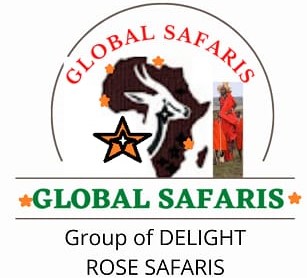

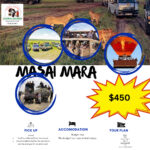

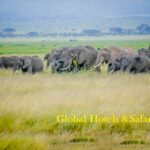




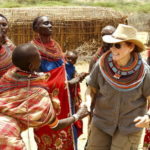
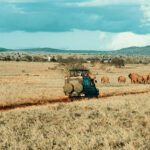
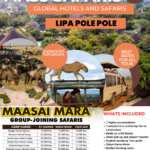
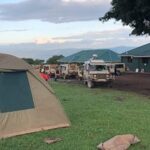
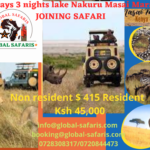

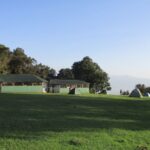
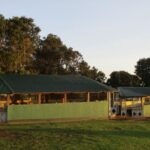
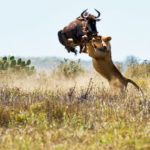

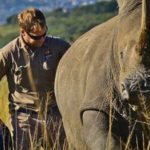


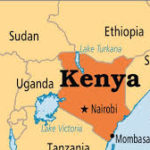
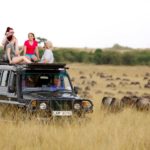

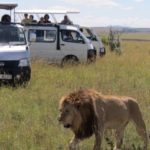
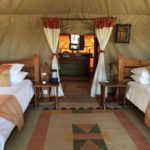


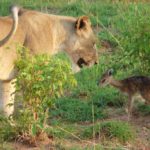
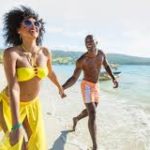
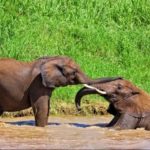

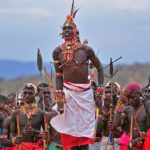
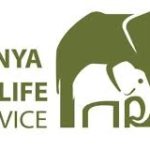








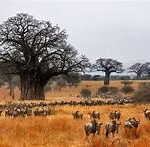
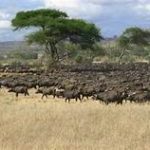


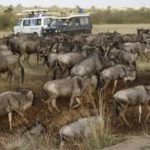
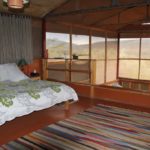
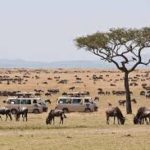


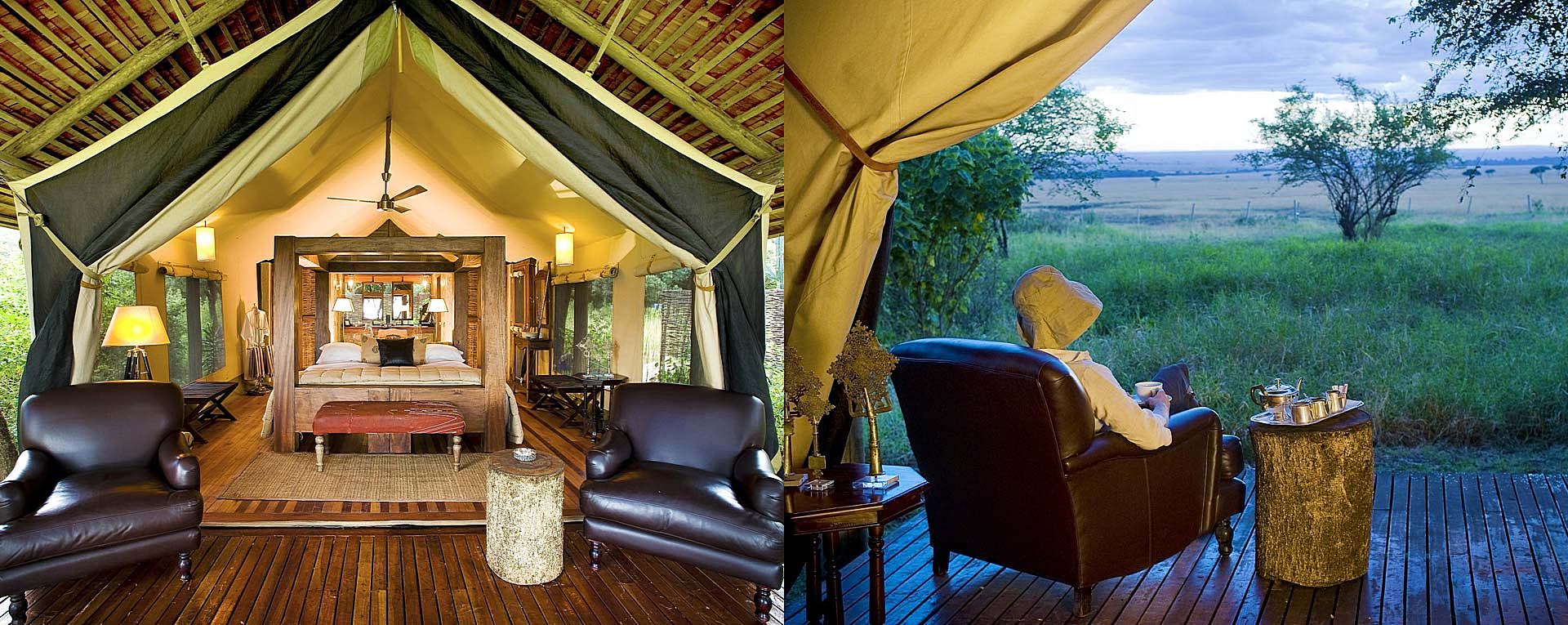
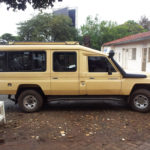
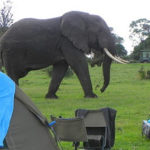

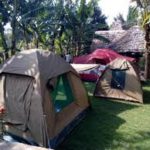


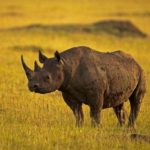
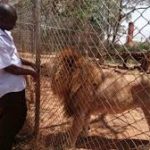
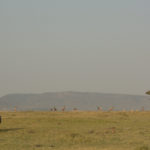



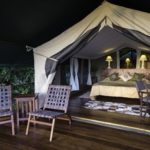

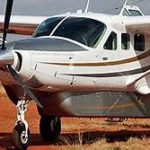

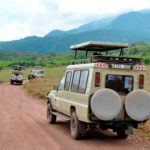

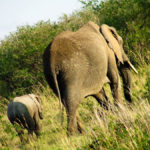

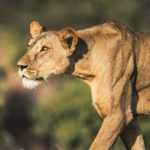
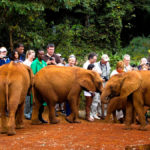

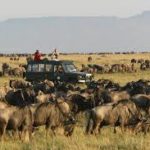

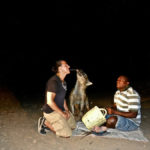
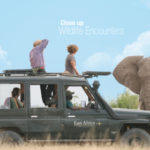
kenya Budget Safari to Masai Mara Game Reserve - Global Hotels & SafarisApril 9, 2023
[…] Masai Mara NR […]